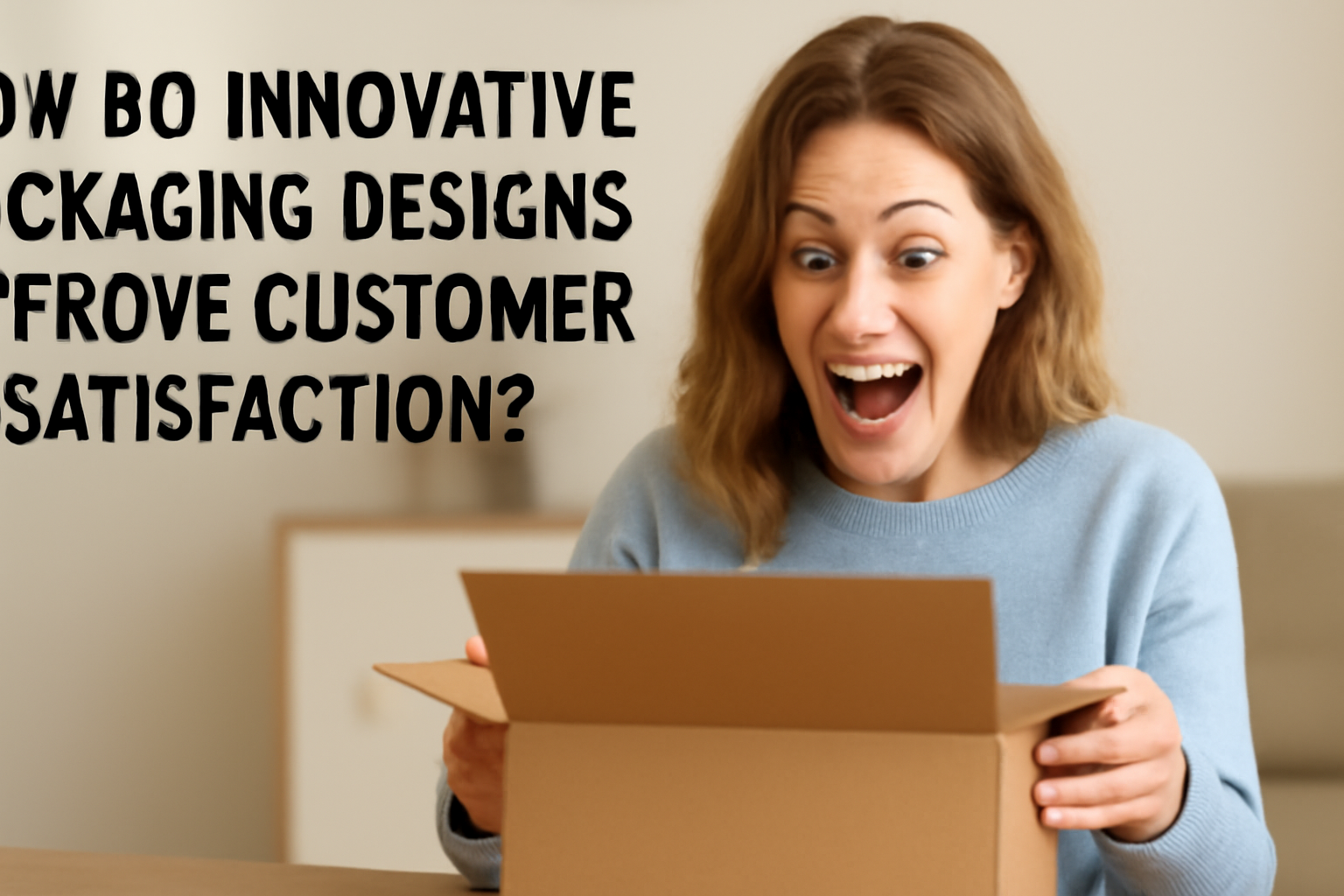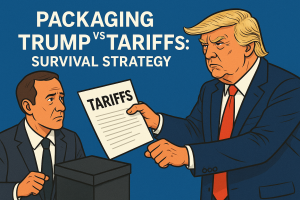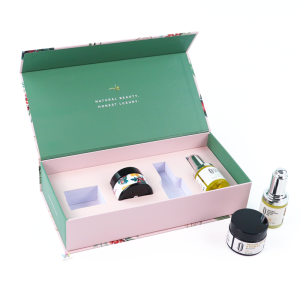In today’s highly competitive market, consumer experience is everything. One of the most powerful yet often overlooked ways to influence customer satisfaction is through the unboxing experience. This seemingly simple act of opening a package can leave a lasting impression on shoppers, making innovative packaging more important than ever. But how does creative packaging truly enhance the unboxing experience?
This article will explore how innovative packaging can influence customer satisfaction, drive brand loyalty, and elevate a brand’s identity. We’ll also dive into the current packaging trends, why unboxing matters for brand recognition, and what the future holds for this essential aspect of consumer engagement. Keep reading to see how packaging can become your brand’s silent salesperson.
1. What is the importance of innovative packaging in the unboxing experience?
Innovative packaging plays a critical role in shaping the overall consumer experience. When done right, it has the potential to elevate a simple transaction into an emotionally engaging moment. Consumers today don’t just purchase products—they are looking for experiences that resonate with them. And packaging can provide just that.
Here’s the kicker: Unboxing is more than a functional task; it’s an emotional journey. The first impression your packaging makes can significantly impact how a customer feels about your brand. If your packaging is thoughtful and well-designed, it can create excitement, intrigue, and even joy. This emotional connection leads to a positive customer experience, which translates to stronger brand loyalty.
What makes packaging so crucial is that it’s often the first tangible interaction a consumer has with your product. The visual appeal, texture, and functionality of packaging convey the essence of your brand before the customer even sees the product itself. This is why it’s essential to get it right.
2. How does packaging design influence customer expectations?
Have you ever received a product wrapped in plain, generic packaging and felt a sense of disappointment before you even opened it? What’s the real story here? The design of packaging is so much more than just functional—it sets the stage for the entire experience. It influences the expectations a customer has about the product, from its quality to its value.
When customers receive a product in beautifully designed packaging, they immediately associate it with quality. Think about luxury brands like Apple or Tiffany. The sleekness of the packaging mirrors the premium quality of the product inside. On the other hand, poor-quality packaging can result in negative expectations and even prompt customers to reconsider their purchase.
The psychological impact of packaging design cannot be overstated. Ready for the good part? Colors, textures, and materials all contribute to how a customer perceives value. A minimalist design with high-end materials suggests sophistication and exclusivity, while bright, bold packaging may evoke a sense of fun or playfulness. This subconscious messaging affects how customers approach and evaluate the product inside.
3. What are the key trends in innovative packaging today?
Packaging design has evolved considerably in recent years, driven by consumer demand for sustainability, personalization, and technological integration. These trends reflect broader shifts in consumer behavior and attitudes toward brands. But here’s the kicker: These trends are not just passing fads—they are shaping the future of packaging.
Sustainability is at the forefront of these changes. Consumers are more conscious than ever about the environmental impact of their purchases. As a result, eco-friendly packaging solutions are on the rise. Companies are turning to biodegradable materials, recyclable packaging, and even edible packaging to reduce their environmental footprint. Brands that embrace sustainability not only attract environmentally-conscious consumers but also enhance their brand image.
Another notable trend is the incorporation of technology into packaging. QR codes, augmented reality (AR), and NFC (Near Field Communication) technology are now being integrated into product packaging to offer consumers more interactive experiences. This is where it gets interesting: Imagine receiving a package, scanning a QR code, and being instantly connected to an exclusive video or an immersive brand experience. It’s these kinds of interactive features that make unboxing even more engaging.
Personalization is also becoming a key factor in packaging design. Brands are increasingly customizing their packaging to cater to specific customers or product types, allowing for a more personal connection with the consumer. Whether it’s adding a personalized note or customizing the exterior design based on customer preferences, these touches make the unboxing experience feel more intimate and tailored.
4. Why does unboxing play a role in brand identity?
Unboxing has emerged as a critical component of brand identity. A brand’s packaging is more than just a protective layer around a product; it serves as a direct reflection of its values, aesthetics, and ethos. What’s the real story behind this? It’s simple: Packaging is part of your brand’s personality.
Think of iconic brands like Apple and Coca-Cola. Their packaging doesn’t just protect the product; it speaks to the brand’s values. Apple’s minimalist and sleek design reflects its commitment to simplicity and innovation. Coca-Cola’s consistent use of red and white evokes feelings of nostalgia and happiness. When consumers see these familiar colors and designs, they immediately recognize the brand and its values.
But here’s the kicker: Packaging allows brands to communicate their message to the customer without saying a word. It’s a silent spokesperson, reinforcing the brand’s identity with every interaction. When consumers engage with your product, the unboxing experience becomes a key part of their relationship with your brand, reinforcing loyalty and trust.
5. How can brands leverage packaging to enhance customer engagement?
The unboxing experience presents an incredible opportunity for brands to engage with their customers on a deeper level. This is where it gets interesting: It’s not just about how the product looks; it’s about how it makes the consumer feel.
Brands can enhance customer engagement by designing packaging that creates a sense of anticipation and excitement. Think about the thrill of peeling back a perfectly designed box or the joy of seeing a personalized message inside. These small touches can create a memorable experience that customers will share with others.
The rise of social media has made unboxing a form of marketing in itself. Platforms like Instagram and YouTube are full of influencers and customers sharing their unboxing moments. Ready for the good part? Brands can encourage this by designing packaging that is photogenic and shareable. This creates organic social media content that helps to further amplify the brand’s reach.
6. What is the future of packaging and unboxing experiences?
Looking ahead, packaging will continue to evolve. Consumer expectations are always changing, and brands must adapt to stay relevant. What’s next in the future of packaging? Innovation will be key.
Sustainability will likely remain a major focus, with further advancements in eco-friendly materials and packaging solutions. But the future isn’t just about the environment—it’s also about creating new, immersive experiences that connect with consumers on a deeper emotional level. As artificial intelligence and automation continue to advance, packaging will likely become more customizable and efficient, allowing brands to offer personalized experiences at scale.
The kicker: As technology progresses, we may even see the rise of fully interactive packaging, where consumers can engage with products before they even open the box. The possibilities are endless, and one thing is certain: The unboxing experience will only continue to grow in importance.
7. How do innovative packaging designs improve customer satisfaction?
Here’s the deal: A good customer experience doesn’t end when the purchase is made. The unboxing process is a vital part of the overall satisfaction a customer feels. When the packaging is designed with care, customers feel valued and appreciated.
Innovative packaging can create a sense of excitement. Imagine unwrapping a product that’s carefully packaged with premium materials, or the surprise of discovering unexpected extras like a personalized thank-you note. These thoughtful details can elevate an average product into something memorable. Ready for the good part? You don’t need to invest in expensive gimmicks to make an impact—just focus on quality, uniqueness, and a personal touch.
From a practical standpoint, good packaging ensures that a product arrives safely and in pristine condition, which naturally leads to higher satisfaction. But beyond that, it enhances the emotional aspect of receiving a package. By enhancing the feeling of anticipation and delight, innovative packaging fosters a deeper connection with the brand, leading to higher customer retention rates.
8. How can sustainable packaging influence consumer choices?
There’s no doubt that sustainability is a hot topic, but it’s not just about saving the planet—it’s also about meeting the growing demand from consumers for ethical and eco-friendly products. What’s the real story here? Packaging plays a crucial role in a brand’s sustainability efforts, and consumers are increasingly factoring in packaging choices when making purchase decisions.
Here’s the kicker: Brands that adopt sustainable packaging can tap into a powerful market of environmentally-conscious consumers who are willing to pay more for products that align with their values. By using recyclable, biodegradable, or reusable materials, brands show that they care about more than just profits—they care about the planet and the well-being of future generations.
Incorporating sustainable packaging also helps brands stand out in an increasingly competitive market. Consumers are more likely to remember and recommend a brand that makes conscious, responsible choices. But it’s not just about greenwashing—it’s the real deal. Authenticity is key. Brands that make sustainability a core part of their mission can build long-lasting relationships with consumers.
9. Why should brands invest in unique packaging designs?
What’s the real story here? Unique packaging designs are more than just a trend; they’re a strategic investment in customer engagement and brand differentiation. In a crowded market, standing out is crucial, and packaging is one of the most visible ways to do so.
Think about brands like Nike, Apple, or even smaller boutique brands. Their packaging isn’t just functional—it tells a story. It reflects their values, engages the consumer’s emotions, and makes a statement. This level of attention to design doesn’t go unnoticed. Consumers today are increasingly looking for brands that offer more than just a product—they want a brand that speaks to them, shares their values, and makes them feel special. What’s the kicker? Unique packaging can increase a product’s perceived value, making it more likely for consumers to choose your brand over competitors.
Additionally, unique packaging can enhance brand recall. When a consumer sees your product on a shelf or in an online photo, they’ll instantly recognize it based on its distinctive packaging. This type of recognition strengthens brand loyalty and can encourage repeat purchases.
10. How does packaging reflect the values of a brand?
Packaging is often the first touchpoint a consumer has with a product, and it’s critical for that touchpoint to align with the brand’s core values. What’s the real story here? Packaging should act as a reflection of a brand’s mission, ethos, and promise to the customer.
For example, if a brand positions itself as environmentally conscious, its packaging should mirror that identity through the use of sustainable materials. If a brand emphasizes luxury, the packaging should be elegant, refined, and high-quality. Ready for the good part? Packaging is a reflection of how a brand wants consumers to perceive it. Whether it’s a minimalist design for a brand focused on simplicity or a bold, vibrant package for a playful brand, the right design can reinforce a brand’s message and help shape the consumer’s perception.
By aligning packaging with brand values, companies can create a seamless and authentic customer experience. Consumers will feel more connected to a brand that’s consistent in its messaging and actions.
11. What are the challenges in designing innovative packaging?
Designing innovative packaging isn’t as simple as it sounds. There are many challenges involved in creating a design that’s not only functional but also stands out in a crowded marketplace. What’s the real story? Balancing creativity with practicality is often the hardest part.
Here’s the kicker: The packaging must not only appeal to the consumer’s emotional needs, but it also has to meet functional requirements. It must protect the product, be easy to open, and be cost-effective for the brand to produce. But beyond that, it must also be on-brand, memorable, and sustainable.
Additionally, there’s the challenge of staying relevant. Trends change quickly, and packaging that feels fresh today may look outdated in a few years. Designers must constantly innovate to stay ahead of the curve while keeping costs manageable. It’s a delicate balancing act.
12. How can brands ensure their packaging stands out on the shelf?
In a retail environment, standing out on the shelf is a critical concern for brands. What’s the real story? Packaging plays a key role in attracting attention and enticing consumers to pick up a product.
Ready for the good part? Color and typography are two of the most important factors in packaging design. Bright, bold colors can help a product stand out from the competition, while well-chosen fonts can make a brand’s message more clear and impactful. But it’s not just about making a product “pop”—it’s about creating packaging that communicates the brand’s personality and values.
Unique shapes and materials can also play a role in creating a standout product. For example, a product in a uniquely-shaped bottle or box is more likely to catch the consumer’s eye and spark curiosity. As online shopping grows, packaging designed to look good on camera is also becoming increasingly important. What’s the kicker? Consider how packaging will be viewed not just in-store but also online and on social media.
13. How do customer preferences influence packaging design?
Customer preferences are a driving force behind packaging design. What’s the real story? If you want your packaging to succeed, it needs to resonate with your target audience.
Here’s the kicker: As consumers become more aware of their purchasing decisions, they are looking for packaging that aligns with their values. Whether it’s environmentally friendly packaging, minimalist design, or packaging that’s easy to reuse, customer preferences are steering the direction of packaging innovation. Brands that can understand and cater to these preferences are more likely to succeed.
Understanding your target customer—what they value, how they shop, and what appeals to them—can guide the packaging design process. For example, if your target market values sustainability, you’ll want to use eco-friendly materials. If they prefer a luxury experience, your packaging should reflect sophistication and elegance.
14. How do brand collaborations impact packaging design?
Collaborations between brands often lead to unique, limited-edition packaging designs that generate buzz and excitement. What’s the real story here? These collaborations allow brands to reach new audiences and create packaging that reflects the combined identities of both brands.
Think about a collaboration between a luxury fashion brand and a high-end beverage brand. The packaging for the collaboration would reflect the values of both brands while also creating something new and exciting. These partnerships not only boost brand visibility but also drive consumer interest. Ready for the good part? When done right, collaborations can increase the perceived value of the product and elevate the brand’s reputation.
15. How do global trends influence packaging innovation?
Global trends in consumer behavior, technology, and sustainability are heavily influencing packaging innovation. What’s the real story? Brands must stay attuned to these trends to remain competitive and relevant.
Here’s the kicker: Packaging that is innovative today might not be as effective tomorrow if it doesn’t keep up with evolving trends. For example, the rise of e-commerce has led to a demand for packaging that is both durable and easy to ship. Similarly, global environmental concerns have pushed for packaging that minimizes waste and carbon footprints.
As these trends continue to evolve, so too will packaging. Brands that embrace these global changes will be able to stay ahead of the curve and continue to engage their customers in new, meaningful ways.
Conclusion
Innovative packaging is not just a functional necessity—it’s an opportunity for brands to create memorable, emotional connections with their customers. By focusing on design, sustainability, and customer preferences, brands can leverage packaging as a tool to enhance customer satisfaction, build brand loyalty, and differentiate themselves in a competitive market.
FAQ Section
Q1: What is innovative packaging?
Innovative packaging refers to creative and thoughtful design that enhances the product’s presentation, improves user experience, and often incorporates sustainability or technology.Q2: How can packaging affect a customer’s perception of a product?
The design and quality of packaging can significantly influence a customer’s perception, making a product appear more valuable, high-end, or environmentally friendly.Q3: What are the benefits of sustainable packaging?
Sustainable packaging reduces environmental impact and appeals to eco-conscious consumers, enhancing a brand’s reputation and aligning with consumer values.Q4: How does unboxing affect brand loyalty?
A positive unboxing experience can deepen customer emotional engagement with a brand, increasing loyalty and prompting repeat purchases.Q5: What are some examples of brands using packaging to enhance their identity?
Companies like Apple, Coca-Cola, and Tiffany use packaging not just as protection for the product but as a key element of their branding, creating memorable and recognizable experiences.




